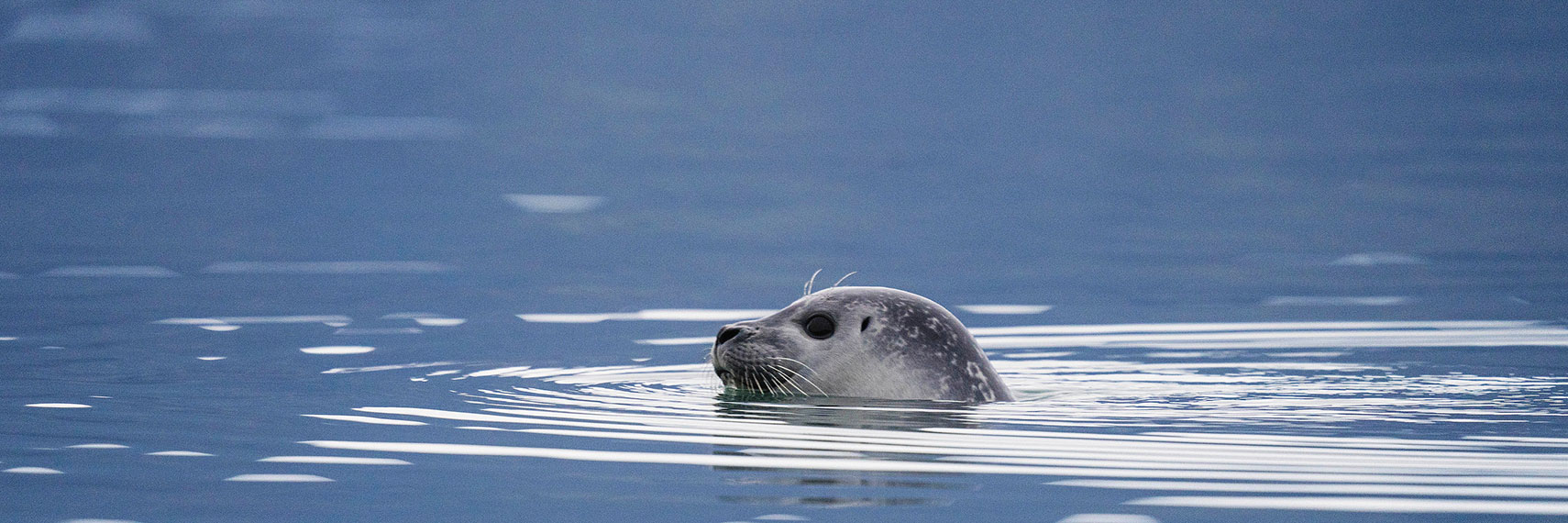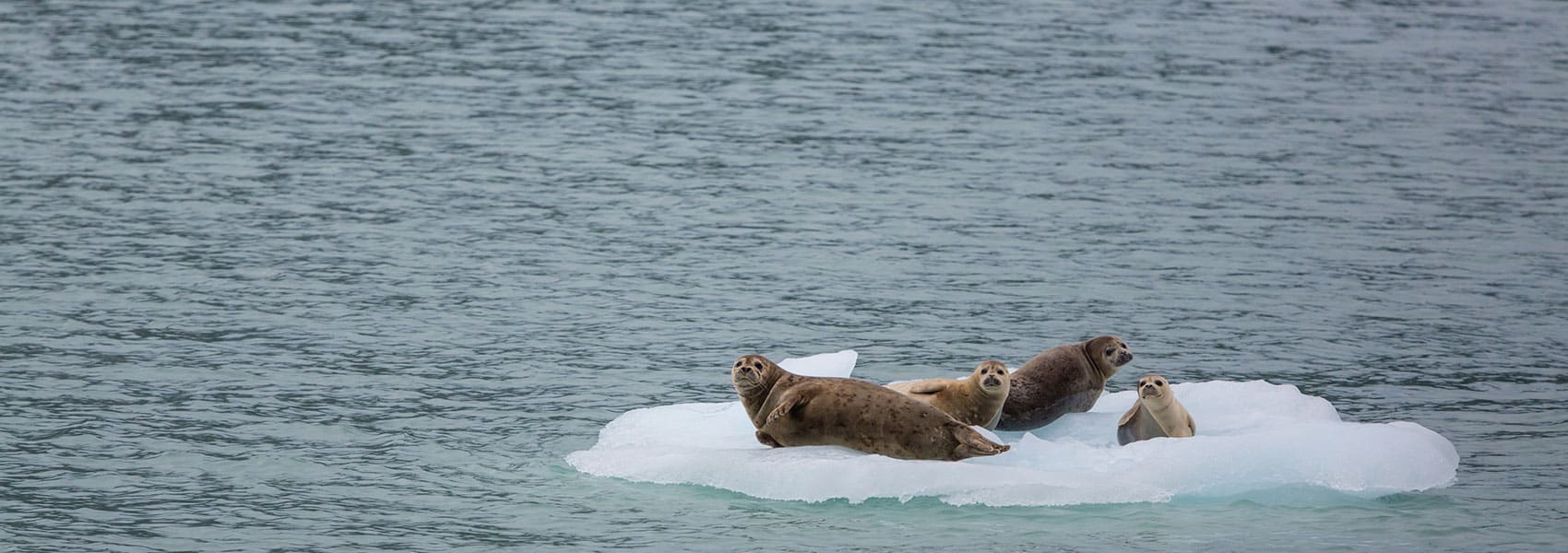2009
Project Methods and Field Activities June 2009
Two large support boats captained by Henry Goodwin and Virgil Naylor and two inflatable boats traveled daily to the pack ice near Kotzebue between June 19 and June 29, 2009. Approximately 40-50 % of the Sound was covered with sea ice when the project started with most ice clustered in an area running South to North between Goodhope Bay and Cape Krusenstern.
The seals were captured in large-mesh twisted-monofilament nets 180′ x 26′ with a 22” stretch mesh that were deployed from zodiacs in water channels within the pack ice near areas occupied by molting adults. The nets were visible to the seals which, apparently out of curiosity, approach them and accidentally became entangled. A sub adult weighing 406 pounds was captured on June 23. On June 25, an adult bearded seal weighing 558 pounds was captured and was the first adult bearded seal captured and fitted with satellite tracking tags in Alaska. The last seal captured was a sub adult weighing 434 pounds on June 26.
Captured seals were sedated, removed from the net, measured and weighed. Samples of their blood and skin were taken to assess their health and for DNA studies. Each seal was also instrumented with two SDRs: A SPOT tag, attached to the rear flipper, and a SPLASH tag, glued to the hair on the seals’ head (picture 2). The head mounted tag provides more information than a back mounted tag as the head is out of the water more frequently and for longer periods than the back. The SPOT tag relays information on haul-out timing and seasonal movements, and will transmit for up to three years. The SPLASH tag, which will fall off when the seal molts the following spring, provides the same information as well as data on the timing and depth of the animals dives. The information collected with these two tags can be used to identify important habitats, describe foraging behavior and improve population estimates.
Soon after being released, all three bearded seals moved out of Kotzebue Sound and followed the Alaska coastline north (see maps). Further analyses will include investigations of the potential effects of bathymetry, ice concentration and ice extent on their movements and diving behavior. Owing to the success of this pilot program, the NMML plans to work with other communities to identify opportunities for working together to expand the study.
2011
Project Methods and Field Activities June 2009
Project Methods and Field Activities June 2011
A team from the Native Village of Kotzebue (NVK) and the NOAA National Marine Mammal Laboratory (NMML) worked from June 14 – June 22, 2011 to tag ugruks (bearded seals) in Kotzebue Sound . Two females and one male were tagged with satellite location transmitters. Based on their size and dentition, we estimated that one of the females is a yearling and the other female and the male are 2-3 years old. The initial movement pattern of the male sub-adult tagged in 2011 was very similar to the patterns displayed by the two sub-adult males tagged in 2009. The two females, however traveled much farther from the coast, preferring to occupy the central Chukchi Sea . In the fall, all seals began moving south with the advancing ice and by December all had passed into the Bering Sea . Again, all seals tagged in 2011 routinely dove to the seafloor. In autumn, the females occupied areas of deeper water (50-150 m) than the males (approx. 50 m), and their dives were of longer duration (8-16 vs. 6-10 minutes). In the winter however, when both sexes occupied water less than 50m, dive duration was about 6-10 minutes for all seals. All tags are still currently working and we will continue to report on the seal movements. A field effort is currently planned for Kotzebue Sound and the NSB in 2012.
2012
Project Methods and Field Activities June 2009
Project Methods and Field Activities June–July 2012
A team from the Native Village of Kotzebue (NVK) and the NOAA National Marine Mammal Laboratory (NMML) worked from June 24 – July 6, 2012 to tag ugruks (bearded seals) in Kotzebue Sound. The only ugruk captured and tagged was caught on July 3 and was the seventh ugruk tagged in the 4-year project. At 469 lbs and 6.5 ft long, she weighs in as the second largest ugruk (and the largest female) captured in the project.
Shortly after being released, the female ugruk left Kotzebue Sound and headed north close to the coastline. She continued north and east along the coast to the Camden Bay area near Kaktovik, AK . This is in stark contrast to the two sub-adult females tagged in 2011 which, upon reaching Point Hope, left the coast for the central Chukchi Sea . It is also farther east than the area used by the adult male tagged in 2009, near Prudhoe Bay . She then spent about 3 weeks in Camden Bay before turning around and heading all the way back south, with a bit of a delay for a while NE of Barrow. As of early November, 2012, she was west of Kotzebue Sound, headed south toward Bering Strait.




